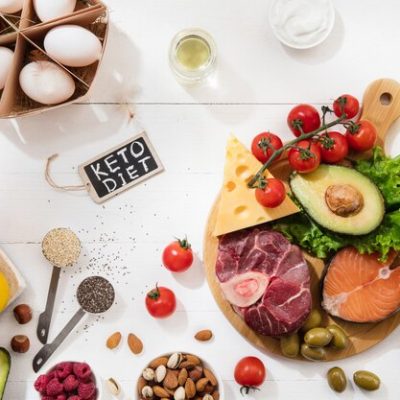Today, let’s explore the fascinating world of superfoods. Consider them nature’s multivitamins; they are packed with vitamins, minerals, and antioxidants that can significantly enhance your health.
While you might view ‘superfood’ as just a trendy label, these nutritional powerhouses have been celebrated for centuries. Quinoa, for instance, was not merely a side dish; it was a staple for the Incas. The Aztecs and Mayans also embraced chia seeds, using them for various purposes, including food and medicine.
Superfoods boast a rich history, and incorporating them into your diet is like unlocking ancient secrets for better health.
This post may contain affiliate links, which help keep this content free. Please read our disclosure for more information.
When we refer to superfoods as nutritional powerhouses, we truly mean it. They are the all-stars of the food world. Here’s a closer look at what makes them so special:
Rich in Vitamins and Minerals: Superfoods are often abundant in essential vitamins and minerals. Leafy greens like spinach and kale, for example, are loaded with vitamins A, C, and K, along with iron and calcium. These nutrients are vital for maintaining strong bones and supporting your immune system.
Antioxidant Power: Antioxidants act as your body’s cleaning crew, helping to eliminate harmful substances known as free radicals that can damage your cells. Berries, such as blueberries and goji berries, are particularly high in antioxidants.
Healthy Fats: Not all fats are the same, and some superfoods contain the beneficial types! Avocados, nuts, and seeds, for instance, are rich in healthy fats that are essential for brain function and reducing inflammation.
Fiber for Digestive Health: Many superfoods are high in fiber, which is excellent for your digestive system. Fiber helps keep things moving along and is also great for heart health. Foods like chia seeds, lentils, and quinoa are champions of fiber.
Plant-Based Proteins: Who says protein only comes from meat? There are plenty of superfoods like lentils, beans, and nuts that are rich in plant-based protein, making them perfect for vegetarians and vegans.
Natural Mood Boosters: Some superfoods contain compounds that can help elevate your mood. For example, cacao found in dark chocolate has substances that can improve your spirits—just remember to enjoy it in moderation!
Gut Health Heroes: Let’s not forget about our gut buddies—the microbiome. Foods like yogurt and fermented vegetables are superfoods for your gut, as they contain probiotics that support a healthy digestive system.
Incorporating these nutritional giants into your diet can enhance your overall well-being. They can strengthen your immune system, improve digestion, keep your heart healthy, and even boost your mood.
Welcome to the Superfood Family Reunion! Let’s get to know some familiar faces and discover a few exciting newcomers.
The superfood family is diverse and nutritious, with members from all over the globe:
– Blueberries: These small blue gems are packed with antioxidants, vitamin C, and fiber. They’re fantastic in smoothies, on cereal, or as a snack.
– Acai Berries: These Brazilian treasures are rich in antioxidants and can be enjoyed in açaí bowls, smoothies, or juices.
– Goji Berries: Hailing from China, goji berries are high in vitamin A and can be eaten dried or used in teas and smoothies.
– Kale: Kale has become synonymous with superfoods. This leafy green is a vitamin powerhouse, loaded with vitamins A, K, and C.
– Spinach: Another leafy champion, spinach is versatile and mild-tasting, packed with iron, calcium, and magnesium.
– Chia Seeds: These tiny seeds are nutrient-dense, containing omega-3 fatty acids, fiber, and protein. They’re great in puddings, smoothies, or as a topping.
– Flaxseeds: Rich in fiber and omega-3s, flaxseeds can be added to smoothies, baked goods, or sprinkled on yogurt.
– Quinoa: It’s a grain, it’s a seed—it’s quinoa! This gluten-free wonder is high in protein and makes a great substitute for rice or pasta.
– Almonds: Perfect for snacking, almonds are high in heart-healthy fats, protein, and vitamin E.
– Walnuts: Shaped like brains and good for them too, walnuts are high in omega-3 fatty acids.
– Turmeric: Known for its active ingredient curcumin, turmeric has anti-inflammatory properties and is a staple in Indian cuisine, used in curries, soups, or teas.
– Cinnamon: This aromatic spice adds flavor and is rich in antioxidants, linked to lower blood sugar levels.
– Seaweed: Often found in Japanese cuisine, seaweed is a source of iodine, essential for thyroid function, and is rich in various vitamins and minerals.
– Spirulina: This blue-green algae may not sound appealing, but it’s a protein powerhouse that can easily be added to smoothies.
– Lentils: A staple in many diets, lentils are packed with protein, fiber, and essential nutrients.
– Chickpeas: Also known as garbanzo beans, chickpeas are versatile and can be used in dishes like hummus or salads.
Don’t hesitate to experiment with these nutritional stars in your kitchen and discover your new favorites!
Let’s take a closer look at the scientific evidence behind superfoods. Are they truly the heroes they’re claimed to be, or is it just clever marketing?
Here’s what science reveals:
The term ‘superfood’ is broad, but science often focuses on specific compounds. For instance, researchers have studied how the anthocyanins in blueberries can impact heart health and how curcumin in turmeric may help fight certain cancers.
Essentially, it’s not just about the food itself, but how its specific nutrients interact within our bodies.
Some superfoods undergo clinical trials to assess their effects on human health. For example, a study published in PubMed found that while consuming chia seeds didn’t significantly change disease risk factors, it did increase blood levels of alpha-linolenic acid, which is beneficial for heart health.
Clinical trials help us understand which aspects of superfoods are genuinely beneficial.
Not all the good stuff in superfoods is easily absorbed by our bodies. Take turmeric, for example. Its key compound, curcumin, has low bioavailability, meaning our bodies can’t absorb much of it on its own. However, combining it with black pepper, which contains piperine, boosts curcumin absorption by 2000%. Science helps us learn how to maximize the benefits of these foods.
The future of nutrition is personalized, and what works as a superfood for one person may not work for another. Our genetic makeup can influence how we absorb and metabolize nutrients. For instance, some individuals may benefit more from the omega-3 fatty acids in walnuts due to specific genetic variants affecting fat metabolism.
Superfoods don’t operate in isolation. Scientists have discovered that the combined effects of consuming a variety of nutrient-rich foods can be more powerful than consuming a single superfood alone. For example, the antioxidants in tomatoes and broccoli together have been shown to be more effective in slowing prostate tumor growth than consuming either vegetable alone.
There’s a difference between using superfoods as a preventive measure and treating existing conditions. While certain superfoods may help lower the risk of chronic diseases when included in a balanced diet, they are not a substitute for medical treatment.
The labeling of some products as superfoods often relates more to marketing than science. It’s essential to differentiate between evidence-based benefits and unsubstantiated claims. Be critical and seek out peer-reviewed studies or consult health professionals.
Science indicates that superfoods can be part of a healthy diet, but it’s not just about piling them on your plate. It’s about knowing which ones provide the benefits you seek, how to combine them effectively, and remembering that they are just one piece of the larger nutritional puzzle.
Now, let’s get practical. Incorporating superfoods into your daily meals can be simple and delicious.
Breakfast Boost: Start your day right by enhancing your oatmeal or cereal with a handful of berries or a sprinkle of chia seeds. For an extra kick, add a dash of cinnamon for flavor and health benefits.
Super Smoothies: Smoothies are like the superhero team-up of the food world. Blend in spinach, kale, or even avocado with your favorite fruits. Don’t forget to add a spoonful of flaxseeds or a pinch of spirulina for an extra nutritional boost.
Snack Attack: Skip the chips and choose a handful of nuts or seeds instead. They’re not only satisfying but also nutrient-rich. If you’re feeling adventurous, try making a homemade trail mix with almonds, walnuts, dried goji berries, and dark chocolate bits.
Veggie-Packed Lunches and Dinners: For main meals, think color! The more vibrant your plate, the better. Use quinoa as a base, top it with roasted veggies like sweet potatoes and broccoli, and don’t forget some leafy greens. Drizzle with a dressing made from olive oil, lemon, and a pinch of turmeric.
Herb and Spice it Up: Remember, superfoods also come in small packages, like herbs and spices. Season your dishes with turmeric, ginger, and garlic. This not only enhances flavor but also provides health benefits.
Mindful Portions: Even superfoods should be consumed in moderation. They can be quite nutrient-dense, so balance is key.
Welcoming superfoods into your diet can be easy and delicious. It’s about making small adjustments and experimenting until you find the combinations that please both your taste buds and your body.
Before we conclude, let’s discuss something crucial—sustainability.
While superfoods are fantastic, the hype around them can sometimes harm the environment and the communities that grow them. When demand for quinoa or acai berries skyrockets, it can strain local resources and ecosystems.
Consider this: if a superfood is sourced from halfway around the world and everyone wants it, that’s a lot of travel for those little gems. Additionally, local farmers may not receive their fair share, and the soil can become overworked.
So, let’s be mindful. When selecting superfoods, check the labels. Look for brands that prioritize environmental sustainability and fair treatment of farmers, such as Fair Trade or organic options.
And why not support local produce? There are likely superfoods grown close to home.
Being healthy is wonderful, but let’s ensure our planet remains healthy too. A little mindfulness in our choices can make a significant difference. High-fives for being superfood savvy!
Superfoods are rich in vitamins, minerals, and antioxidants, and adding them to your diet can greatly benefit your health. However, they’re not a cure-all.
They work best as part of a balanced diet that includes a variety of foods. Additionally, consider the broader context of where and how these superfoods are grown. It’s wise to choose products cultivated in environmentally friendly ways that also support the people who grow them. So, check labels and opt for organic or Fair Trade options when possible.
In summary, superfoods are a fantastic addition to your meals, but remember—balance is essential, and caring for the planet is important too. Enjoy your meals!










